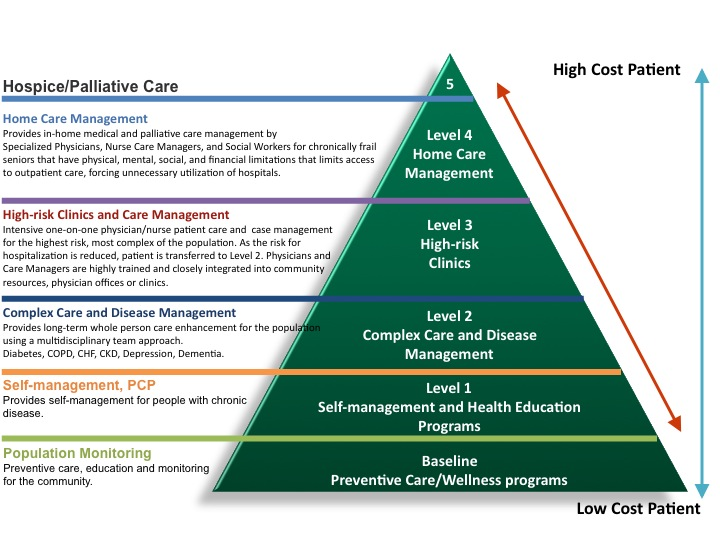According to the HHS Action Plan to Reduce Racial and Ethnic Health Disparities, the 2 significant factors contributing to out of proportion health problems are insufficient access to care and the provision of subpar quality healthcare services. Several federal government firms within the U. How social media affects mental health.S. Department of Health and Person Providers work to eliminate the health variations experienced by minority populations: The Office of Minority Health (OMH) works to improve the health status of racial and ethnic minorities, remove health disparities, and achieve health equity in the U.S. https://criticsrant.com/signs-that-a-person-needs-to-see-a-psychiatrist/ OMH offers Minority Population Profiles for African Americans, AI/ANs, Asian Americans, Hispanics and Latinos, and Native Hawaiians and Pacific Islanders that include different pieces of information such as a demographic summary, educational achievement, health conditions, medical insurance coverage, economics, language fluency, U.S.
The Federal Workplace of Rural Health Policy (FORHP) has a longstanding interest in the varied health needs of rural minority populations and provides info, expertise, and grant opportunities to deal with the inequities found in rural minority health populations. The CDC Workplace of Minority Health and Health Equity (OMHHE) aims to remove health variations for vulnerable populations as defined by race/ethnicity, socioeconomic status, location, gender, age, special needs status, sexuality, gender, and among other populations determined to be at-risk for health variations. Every state has a state workplace of minority health or health equity workplace charged with lowering health variations within their state, providing state-level health info and resources targeted toward minority populations.
Numerous publications identify and describe the rural health disparities that consist of urban comparisons. The research study Exploring Rural and Urban Death Distinctions provides information tables and online tools showing death rates for the 10 leading causes of https://anationofmoms.com/2020/12/teen-drug-addiction.html death by rurality, age, region, and sex. The 2014 Update of the Rural-Urban Chartbook highlights health patterns and disparities across different levels of metro and nonmetropolitan counties. The chartbook includes population attributes, health-related habits and risk elements, mortality rates, and health care gain access to and use. Individual information tables in the chartbook are available in an Excel file. A National Health Care Quality and Disparities Report is published yearly by the Firm for Healthcare Research and Quality.
population and backwoods. The report likewise tracks the success of activities to reduce disparities. Health Disparities: A Rural-Urban Chartbook is a research task providing information on health variations experienced by individuals living in rural America. Some disparities determined are poorer health status, greater occurrence of obesity, lesser choices for activity, and higher death rates. Health, United States presents an annual overview of nationwide patterns in health data. The report covers health status and determinants, healthcare usage, access, and expenditures. To view rural data in the Data Click for more info Finder, select Metropolitan and nonmetropolitan under Population Subgroups. Rural Healthy Individuals 2020 describes a tactical strategy to determine rural health priority locations.
The Rural Health Research study Entrance's Health Disparities and Health Equity subject lists of publications and tasks on the subject of rural health disparities and health equity established by FORHP-funded rural health research centers. Rural-Urban Disparities in Health Care in Medicare examines differences and disparities in the quality of Medicare services for rural and city populations, and includes rural health variation information by race and ethnic background. The Rural Border Health Chartbook II analyzes rural and city U.S.-Mexico border counties by comparing them to other counties in the four border states and to other rural and city counties in the U.S. Provides county-level rates and data for socio-demographic elements, healthcare gain access to, health results, and more. 11 infant deaths per 1,000 births), and infants born to Asian or Pacific Islander moms experienced the most affordable rates (3. 90 baby deaths per 1,000 births) (NCHS, 2016). In 2015 the percentage of low-birthweight babies increased for the very first time in 7 years. For white babies, the rate of low-birthweight babies was essentially the same, however for African American and Hispanic infants, the rate increased (Hamilton et al., 2016). Obesity, a condition which has actually numerous associated chronic diseases and debilitating conditions, affects racial and ethnic minorities disproportionately also. This has significant ramifications for the quality of life and wellness for these population groups and their households.
9 percent), and Asians had the most affordable (8. 6 percent) (NCHS, 2016). Again, there is variation amongst Hispanics; Mexican Americans suffer disproportionately from diabetes (HHS, 2015). Cardiovascular disease and cancer are the leading causes of death across race, ethnic culture, and gender (see Table 2-1). African Americans were 30 percent most likely than whites to die prematurely from heart illness in 2010, and African American guys are twice as likely as whites to die too soon from stroke (HHS, 2016b,d). The U.S. Centers for Illness Control and Avoidance (CDC) reports that nearly 44 percent of African American men and 48 percent of African American ladies have some form of heart disease (CDC, 2014a).

The Best Guide To Who Funds The World Health Organization
Leading Causes of Death by Race, Ethnic Culture, and Gender, 2013. Homicide-related deaths, another instance of health disparities, are greatest for African American guys (4. 5 percent) and are at least 2 percent for American Indian/Alaska Native and Hispanic men. The rate of suicide is greatest for male American Indians/Alaska Natives, who are likewise most likely than other racial and ethnic groups to die by unintended injury (12. 6 percent of all deaths) (CDC, 2013d). It is necessary to be cautious with information on disparities in hardship, obesity, and diabetes for numerous reasons. First, security and other information are adequate at recording blackwhite variations in part since of their big sample sizes.